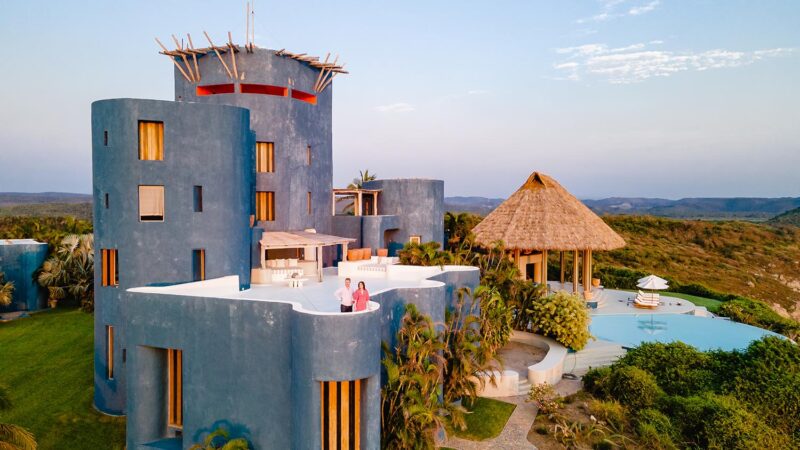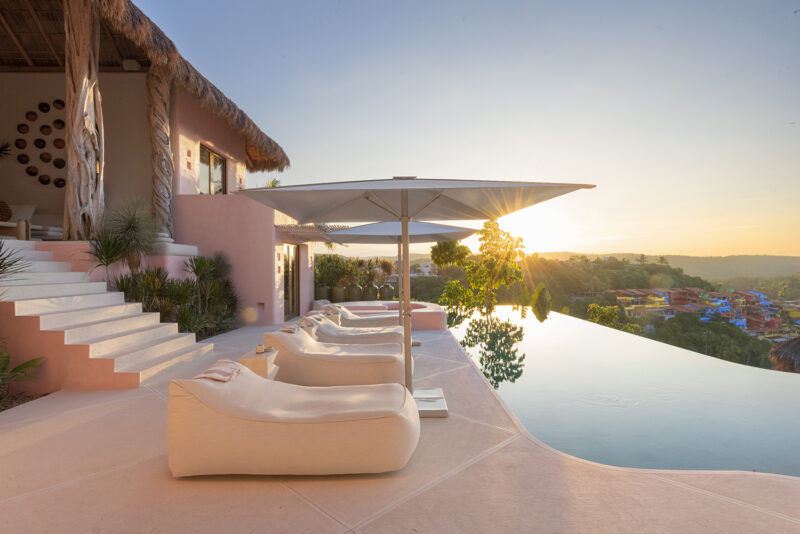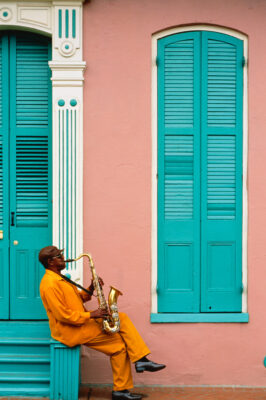
Luxe Mex
The weird and wonderful castles of Careyes
The sybaritic, private Mexican estate is a haven for bohemians, celebrities—and aspirational simplicity.
Imagine a resort where there are no resorts, where the biggest motivator of the denizens is who can out-beauty the other. That’s the gestalt of Careyes, a jewel on the coastal lip of Jalisco, Mexico—created in 1968, when Italian banking tycoon Gian Franco Brignone was flying overhead, saw a secluded stretch of pristine beach and jungle, and decided to buy the whole thing.
Soon after, Brignone, who passed away in 2022, built a flagship villa atop the cliffside edge of the 25,000-acre reserve. He christened the dream home—an azure meld of Mexican and Mediterranean styles—Mi Ojo (“My Eye”); by the 1970s, Careyes was a jungle-framed haven for jet-set hippies, artists, and international playboys.
But there are no hotels. There are only houses. If you want a shot at this paradise—as dozens of celebrities, from Cindy Crawford (Herb Ritts shot her iconic CK Obsession campaign here) to Kevin Hart and Mick Jagger, have found out—you have to either buy a spot yourself, or hermit-crab your way into a rental. Since the pandemic, prices have soared: the candy-colored casitas range in price from $650,000 to $2.2 million; oceanfront lots start at $2.5 million, hilltop land about $1.3 million; sprawling estates fetch upwards of $10 million.


Not surprisingly, the competition to outdo one’s neighbor’s decor is fierce in Careyes—almost comically so—with wealthy homeowners installing amenities such as infinity pools in the shape of Bulgari’s insignia snake.
If you want to outdo your neighbor, the key here is aspirational simplicity: massive, open-air living spaces, palapa rooftops, zero clutter. The one catch: the strictures around what can be built, and when, and in what colors, would put the prissiest city landmark commissioner to shame. For example, no black or white paint is allowed.
“We stick to colors that are happy, sunny and melt with nature,” says Filippo Brignone, Gian Franco’s son and founder of the Careyes Foundation, a philanthropic organization serving Careyes’ surrounding communities. “The houses become like sculptures,” he adds.
The Brignone family owns two homes in Careyes. One, Tigre del Mar, is a private beachfront castle in cobalt blue. His second property, Casa Sol De Oriente, is a lemon-yellow structure currently under remodel and on the market for $15 million. The castle is shaped “like a star,” notes Brignone, and swathed in a 360-degree swimming pool, one of the largest in the world.


“We play very much with the windows and framing the views of Careyes—when the windows are open they look like a painting,” says Brignone. “There is always an element of water in every home, and the rooftops are done in the palapa style. We try to keep the rooms minimalist because you are already exposed to the beautiful colors of life—the sun, the ocean, the sky. When you go to your room, you want to find a sense of peace.”
Careyes abounds with sun-lit villas featuring whimsical names such as Casa Nautilus (bathed in a “dusty rose pink,” per owner Sophie Harvey) and Parasol, a pale pink manse designed by coveted Mexico City designer Antoine Ratigan. Both homes rent for some $6,000 a night.
“I don’t think I chose Careyes—I think Careyes chose me,” notes Becca Halliday Congdon, who divides her time between Mexico City and Careyes and owns Parasol (designed by Antoine Ratigan) with her husband, John. “The people end up there, it’s sort of a cosmic thing.”



And what’s more cosmic than an 18-karat gold, Bisazza mosaic-tiled, Bulgari-inspired serpent slithering its way across a pool? At Casa La Huerta, a surrealistic “portal to another world,” the Serpiente Pool is its signature mark.
“Casa La Huerta translates to the garden that fruits,” says Leah Forester, who owns the fully-staffed, five-suite villa with her husband, film producer Bill Johnson.
“For us, the Garden of Eden was a big inspiration, and the snake is a very central part of that motif. Forester worked with LA-based interior and jewelry designer Raven Kaufman. “Raven’s special sauce is her love of jewelry and workmanship, and we started thinking about different snake motifs and Bulgari came to us,” says Forester. “When I was a child my mother had one of the Bulgari Serpiente rings and it was always a favorite piece. And Raven being a jewelry designer, that was a very good reference for her. We started researching images and came upon a late 1960s image. That was just the jumping off point for us.”

This April 2023, Bulgari feted the 75th anniversary of the iconic Serpiente Collection with a soiree at Casa La Huerta. “We did everything we could to try to find an imaginative way around doing real gold tile,” she admits. “But once we saw this bizarre 18-karat gold tile and the way it looked underwater, with the sun glinting on it and the moonlight glinting on it, there was just no way that we could do anything less. We were already so far into this insane idea, that we just had to go for it.”
Over the top? Perhaps. But the pool, like so much of the architecture of this island, speaks to the original vision of its founder, who was very fond of saying: “Art is a series of mysterious impulses.”
Hero photo by Malina Saval



